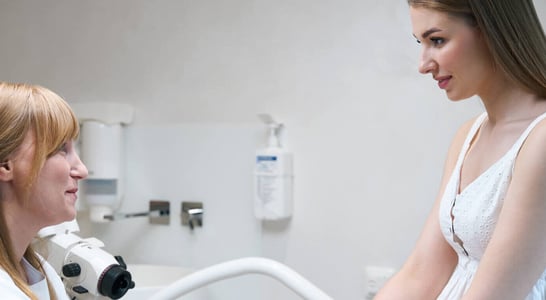
Menstrual Hygiene Day
Many women do not have access to feminine hygiene products, which can lead to shame and even dropping out of school. Donate to charities to help rectify this.
Menstrual Hygiene Day, celebrated annually, focuses on the importance of proper menstrual hygiene management. This day aims to break taboos and spread awareness about menstrual health and women’s hygiene around the world!
How to Celebrate Menstrual Hygiene Day
The day isn’t just about talking; it’s about doing. From creating catchy digital menstruation bracelets to spreading awareness to engaging governments and organizations to invest more in menstrual health, Menstrual Hygiene Day is making strides towards a world where period poverty and stigma are things of the past.
The ultimate goal? To make sure no one is held back just because they menstruate, aiming for a future where periods are a normal fact of life by 2030.
Celebrating Menstrual Hygiene Day can be both impactful and fun with these quirky suggestions:
Rally for Your Right to Know. Advocate for transparency in period product ingredients. Support legislation that demands full disclosure of what’s in these products to ensure they’re safe and free from harmful chemicals.
Follow and Support Champions of Menstrual Equity. On social media, engage with and amplify the voices of organizations and individuals who are fighting for menstrual equity.
Join a Virtual Workshop. Participate in online workshops like “Our Story, Our Flow,” which offer interactive discussions about menstruation. These workshops welcome individuals of all gender identities and are a great way to learn and share experiences.
Support and Celebrate Breakthroughs in Menstrual Health. Applaud the achievements in countries like Bhutan, where sanitary pads are available at all times. Celebrate initiatives like the Red Dot campaign, which promotes menstrual health and hygiene through creative and engaging ways.
Engage in Public and Community Events. Getting involved in public activities can make a significant impact. These can include visiting children’s homes to donate pads or engaging in educational sessions about menstrual health.
Empower Girl Guides and Scouts: Take part in activities aimed at empowering girls in hard-to-reach areas. These can range from teaching how to use reusable pads to organizing events that provide sanitary products.
Why Observe Menstrual Hygiene Day
The day is crucial because over 500 million women and girls globally lack proper access to menstrual hygiene facilities. This lack of access affects their health, education, and overall well-being. Menstrual hygiene is about more than just access to sanitary products.
It includes having clean and safe spaces to change, the ability to wash with soap and water, and hygienically disposing of used menstrual products. Importantly, it also involves education on menstruation to manage it with dignity and without discomfort or fear.
Honoring Menstrual Hygiene Day helps address the multi-dimensional issues related to menstruation. These include inadequate sanitary facilities, lack of access to affordable menstrual products, and cultural taboos that lead to stigma and discrimination.
Through education and raising awareness, the day contributes to reducing the negative impact of poor menstrual health and hygiene on girls’ and women’s education, health, and overall life chances. It’s a call to action for improvements in policy, facilities, and societal attitudes towards menstruation.
History of Menstrual Hygiene Day
Menstrual Hygiene Day has a quirky and impactful history. It’s about turning the tide on period stigma and making menstrual care accessible to everyone, everywhere.
Kicked off by the go-getter NGO WASH United in 2013, this day quickly made its mark by starting a global conversation about periods.
The choice of May 28 for its annual celebration wasn’t random; it cleverly mirrors the average menstrual cycle of 28 days and the five days of menstruation, aligning with May being the fifth month. It’s like they wrapped the whole menstrual experience into one date!
The purpose of the day is to break taboos and spread the word that menstruation is normal and should be stigma-free. The aim is to ensure everyone can manage their menstruation safely, hygienically, and without shame by 2030.
The movement has grown massively, with over 970 partners worldwide working on providing access to quality menstrual products. They educate people about menstruation, change negative social norms, and push for policy changes, like reducing taxes on period products.
The global reach and impact of Menstrual Hygiene Day are nothing short of amazing. What started with reaching over 20 million people in its first year has ballooned to touching nearly 700 million lives by 2022. That’s a lot of conversations and changed attitudes about menstruation!
Changes are happening, with various countries implementing policies to make menstrual products freely available in schools and workplaces and even incorporating menstrual education into school curriculums.
Also on ...
View all holidaysNational Hamburger Day
Grill up a hamburger for yourself, or visit any number of sandwich shops and restaurants to enjoy one of mankind’s greatest, greasiest culinary inventions.
National Brisket Day
Take the plunge and try your hand at making one of the more complicated but also most delicious cuts of beef, the ever-popular brisket.
National Flip Flop Day
Tropical Smoothie Café customers get a free smoothie for showing up in flip-flops on Flip-Flop Day, but let your feet breathe even if you don’t have a local one.
We think you may also like...
World Tuberculosis Day
Honoring the relentless human spirit in the face of a formidable adversary, a disease that has shaped history and medical progress.
National School Counseling Week
Like superheroes, with tissues and good advice, school counselors help students conquer everything from bullies to bad grades.
American Heart Month
Nurturing the vital organ that sustains our existence, ensuring its enduring strength and well-being for a long and fulfilling life.








